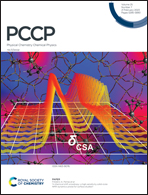Magnetotransport and magnetic properties of Cr-modified Mn2Sb epitaxial thin films
Abstract
High-quality Mn2−xCrxSb (x = 0.01, 0.04, and 0.1) epitaxial thin films were grown on SrTiO3 (STO) (001) single-crystal substrates using molecular beam epitaxy. Magnetotransport and magnetic measurements reveal that the x = 0.01 sample undergoes a quasi-ferrimagnetic (I) [Q-FIM(I)]-to-ferrimagnetic (II) [FIM(II)] spin reorientation (SR) transition and a giant magnetoresistance (MR) associated first-order ferrimagnetic(II)-to-antiferromagnetic (AFM) phase transition upon cooling, resulting in the AFM ground state with a weak in-plane net moment. Upon increasing the doping level from x = 0.01 to 0.1, both the SR transition and the first-order magnetic transition are suppressed. For x = 0.1, the former transition is suppressed, leaving only the Q-FIM(I)-to-AFM transition within the whole temperature region. TAFM−FIM shows almost similar changes upon the application of either in-plane or out-of-plane magnetic fields. TAFM−FIM values of the x = 0.01 and 0.04 samples are much higher than those of the Mn2–xCrxSb bulk with similar doping levels, which can be understood by the clamping effect from STO substrates. For each thin-film sample, the MR effect is observed near TAFM−FIM and disappears in the high temperature Q-FIM(I) phase and low temperature AFM phase, indicating that MR is related to the spin-dependent electron scattering during the first-order magnetic phase transition. Based on the magnetotransport and magnetic data, a magnetic phase diagram is established for the Mn2–xCrxSb films in the low doping level region.



 Please wait while we load your content...
Please wait while we load your content...